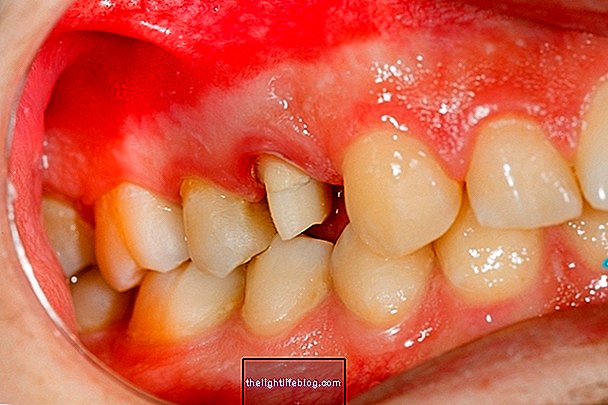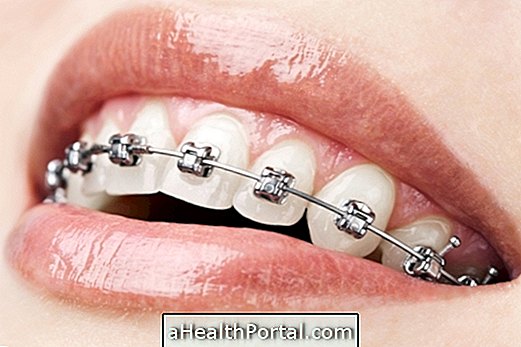Tooth restoration is a procedure performed at the dentist, indicated for the treatment of cavities and aesthetic treatments, such as fractured or chipped teeth, with superficial defects, or with enamel discoloration.
In most cases, restorations are made with composite resins, which is a material with the same color as the tooth, and in some cases silver amalgam can be used in more hidden teeth, as it has greater durability.
After performing a restoration, special care must be taken, so that the restoration has more durability, such as reducing the consumption of cigarettes and foods that may cause stains, such as coffee or black tea, for example.

What is it for
Tooth restoration is indicated for the treatment of cavities and aesthetic treatments, with the aim of restoring fractured or chipped teeth, teeth with superficial defects and with changes in the enamel color.
Know what to do in case of broken tooth.
How the restoration is done
- If a small, recent and superficial caries is present, it can be removed by scraping, without pain or anesthesia, or with a gel that will soften and destroy them;
- In deeper caries, the dentist uses drills, which wear the tooth to remove the caries and, therefore, it is necessary to resort to anesthesia;
- After removing the caries, the dentist shapes the space where he will do the restoration;
- For certain types of restoration, an acidic gel can be applied to the site;
- The application of the resin is done in layers, using a bright light, which strengthens it;
- Finally, the dentist uses utensils to polish the tooth, making it smoother.
Learn more about tooth restoration with caries.

Types of restoration
The type of restoration must be defined by the dentist, which will depend on the extent of the preparation, the location of the tooth where it will be applied, if the person is allergic to any material, among others:
- Composite resins: they are the most used, because they have the same color as the tooth, however, they wear out and stain more easily with time;
- Porcelain restorations: they are generally used to restore broken teeth, and have a greater resistance in relation to those of resin, however, they have a higher cost;
- Gold restorations: they are the most resistant, can last up to 20 years, but they are the most expensive;
- Amalgam restorations: they are also resistant, but they are dark and unsightly and, therefore, they are more suitable for more hidden teeth.
See also the advantages and disadvantages of placing resin or porcelain veneers.
Caring for restorations
In order for restorations to have the greatest possible durability, it is important to have an adequate oral hygiene, with brushing 3 times a day, with a soft brush, mouthwash and flossing. You should also reduce the consumption of foods with pigments that can stain the restoration, such as cigarettes, coffee, wine, soda or black tea, for example, and visit the dentist frequently, and in some cases, replacement may be necessary. restoration.
If the restoration is well treated, it can last between 3 to 10 years, if it is made of resin, and about 13 years, if it is made of porcelain.
Also watch the following video, and knew what care you should take, to avoid going to the dentist:

Was this information helpful?
Yes No
Your opinion is important! Write here how we can improve our text:
Any questions? Click here to be answered.
Email in which you want to receive a reply:
Check the confirmation email we sent you.
Your name:
Reason for visit:
--- Choose your reason --- DiseaseLive betterHelp another personGain knowledge
Are you a health professional?
NoMedicalPharmaceuticalsNurseNutritionistBiomedicalPhysiotherapistBeauticianOther
Bibliography
- SANO Jean, et al .. Local dental anesthesia and embarazo. Acta Odontológica Venezolana. 39. 2; 2001
- FERNÁNDEZ Ofelia, et al .. Dental care in the embarazada mujer. Infant maternal investigation. 2. 2; 80-84, 2010
- ESGUEIRA CLINIC. Previous aesthetic restorations in composite resin. 2014. Available at:. Accessed on 16 Apr 2020
























